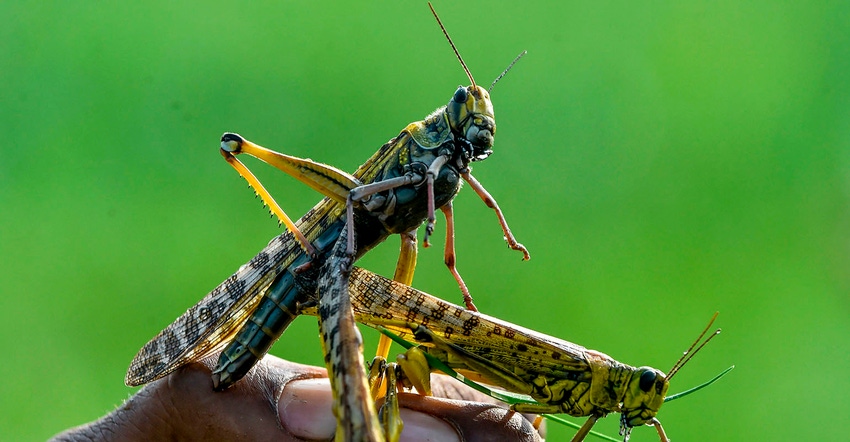
By David Herbling
The World Bank approved $500 million to help fight the worst desert-locust plague in decades that’s threatening food security in parts of Africa and the Middle East.
Countries including Ethiopia Kenya, Uganda, Somalia and Yemen face a second wave of swarms from June. Failure to combat the pests in the Horn of Africa and Yemen could result in crop and livestock losses of as much as $8.5 billion by year-end, according to the World Bank. The lender estimates the intervention could limit the damage to $2.5 billion.
Anxiety over the swarms, which can quickly lay waste to vast swaths of crops, grew as the coronavirus pandemic emerged and decimated economies, further stretching governments.
“This food-supply emergency combined with the pandemic and economic shutdown in advanced economies places some of the world’s poorest and most vulnerable people at even greater risk,” the World Bank’s President David Malpass said in a statement Thursday.
More than 22.5 million people are already facing hunger in Eastern Africa, according to the United Nation’s Office for the Coordination of Humanitarian Affairs. A second wave of locust swarms -- expected in June when farmers in the region prepare to harvest their crops -- could worsen food insecurity and put more people at the risk of losing their livelihoods, the Food and Agriculture Organization warned last week.
In the skies
There could even be a third wave, according to the Intergovernmental Authority on Development, a regional organization whose members include Ethiopia, Somalia and Uganda. “We need at least 100 aircraft on standby in the region to decimate or eradicate this menace,” IGAD Executive Secretary Workneh Gebeyehu said Thursday during a meeting with the FAO. The region has only 13 aircraft now.
Ethiopia, Uganda, Kenya and Djibouti will access $160 million in the first phase of the so-called emergency locust-response program from the International Development Association, the World Bank’s concessional lending arm for poor countries. The funds will help curb the invasion, provide farm inputs and other forms of relief to the most affected and improve preparedness to respond in future, according to the lender.
Unusual weather patterns, which boosted vegetation over parts of the Horn of Africa and the Arab peninsula from last year, saw the pests fly southwards, creating an unprecedented threat to food security.
Below is how the funds will be disbursed:
Ethiopia will get $63 million, half of which is a grant, to partly provide seeds, fertilizer and livestock feed
In Uganda, $48 million will help create employment programs and activities to boost resilience including the conservation of water and soil
Kenya, facing the worst locust invasion in 70 years, will receive $43 million mainly for grants to pastoral households and to help farmers rehabilitate crop and livestock systems disrupted by the pests
Djibouti’s $6 million will partly go to households in cash transfers
--With assistance from Samuel Gebre.
To contact the reporter on this story:
David Herbling in Nairobi at [email protected]
To contact the editors responsible for this story:
David Malingha at [email protected]
Hilton Shone
© 2020 Bloomberg L.P.
About the Author(s)
You May Also Like




